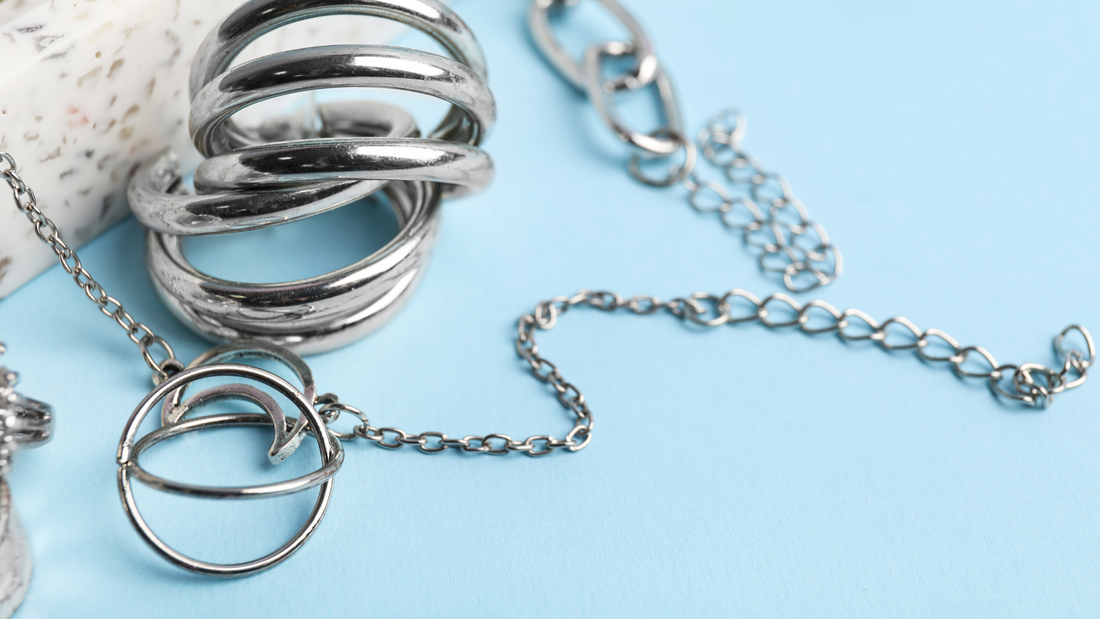
BIS Hallmarking For Silver Jewelry - A Manufacture's Guide
Share
The Indian silver jewelry market is on the verge of a historic transformation. Following the successful implementation of gold hallmarking, the Government of India has now turned its focus to silver. Starting September 1, 2025, BIS hallmarking for all silver jewelry and artifacts will become mandatory.
This landmark regulation is set to redefine the standards of purity, transparency, and consumer trust across the industry. For manufacturers, this is a critical moment. Early adoption and a clear understanding of the new system are not just about compliance—they are about securing a competitive edge in a more organized and credible market.
This guide breaks down everything you need to know to navigate this change seamlessly.
What is BIS Hallmarking? A Stamp of Authenticity
At its core, BIS (Bureau of Indian Standards) hallmarking is a government-certified guarantee of purity. It assures customers that the silver they are purchasing meets a stringent set of standards for fineness. Think of it as an official seal of quality that eliminates ambiguity and protects consumers from fraud.
The Digital Leap: Understanding the HUID System
Gone are the days of simple, manual marks. The new era of silver hallmarking is built on the Hallmarking Unique Identification (HUID) system—a sophisticated, digital-first approach.
Every single piece of hallmarked jewelry will be laser-engraved with a unique six-digit alphanumeric code. This code links the item to a secure online database, creating a traceable digital footprint from the manufacturer to the consumer.
Under the HUID system, every hallmarked silver article will feature three essential marks:
1. The BIS Logo with the word "SILVER": The undeniable mark of the Bureau of Indian Standards.
2. Purity Grade: A number indicating the fineness of the silver (e.g., 925 for Sterling Silver).
3. The 6-Digit HUID Code: The unique identifier for that specific item (e.g., ABC123).
This system makes the entire process more transparent, secure, and difficult to counterfeit.
Know Your Silver: Official Purity Grades
The BIS has recognized seven distinct grades for silver purity. While all are certified, they serve different market segments and purposes.
- 999 (99.9% Pure): Primarily used for investment-grade silver coins and bars.
- 990 (99.0% Pure): Often found in high-end, premium jewelry.
- 970 (97.0% Pure): A standard for fine silver jewelry.
- 958 (95.8% Pure): A newly added grade for quality jewelry.
- 925 (92.5% Pure): Known as Sterling Silver, this is the most popular and widely used grade globally for its ideal balance of purity and durability.
- 900 (90.0% Pure): A common standard for various jewelry items.
- 835/800 (83.5%/80.0% Pure): Typically used for entry-level or decorative pieces.
A Manufacturer's Roadmap to Compliance
Getting your business ready for mandatory hallmarking involves a clear, three-step registration process.
Step 1: Gather Your Documents
Before you begin the online application, ensure you have the following documents ready:
- Proof of Business: Partnership Deed, ROC Certificate, or a CA Certificate.
- Tax Registration: Your GST Certificate.
- Proof of Address: Rent Agreement or Property Tax Receipt.
- Proof of Turnover: Previous year's GST returns.
- Proof of Identity: PAN Card, Aadhaar Card, or Passport of the owner/partners.
Step 2: Understand the Fee Structure
The one-time BIS registration fee is based on your company's annual turnover.
|
Annual Turnover |
Total Registration Fee |
|---|---|
|
Up to ₹5 crore |
₹9,500 |
|
₹5 to ₹25 crore |
₹17,000 |
|
₹25 to ₹100 crore |
₹42,000 |
|
Above ₹100 crore |
₹82,000 |
(Note: These fees include a standard application fee of ₹2,000)
Step 3: The Online Application
The entire process is streamlined through the official BIS Manak Online Portal. Simply create an account, fill out the jeweler registration form, upload your documents, and pay the fee. If all your documents are in order, you can expect approval within 15-20 working days.
The Journey of a Jewel: The Hallmarking Process:
Once you are registered, your jewelry goes through a meticulous process at a BIS-recognized Assaying and Hallmarking Centre (AHC).
Stage 1: Homogeneity Testing: The entire batch of jewelry is first checked to ensure it is uniform and meets BIS standards.
Stage 2: Purity Testing: Random samples from the batch undergo rigorous testing using advanced methods like X-Ray Fluorescence (XRF) and the traditional Fire Assay to verify the exact purity.
Stage 3: Marking and Certification: Once the purity is confirmed, each approved item is laser-engraved with the three essential hallmarks.
The cost for this service is ₹35 per article, with a minimum charge of ₹150 per consignment. The process at an AHC typically takes 3 to 7 days.
The Timeline: Key Dates to Remember
- August 1, 2025: Voluntary HUID-based hallmarking begins. This is the perfect window to adapt your processes and get your initial batches hallmarked without pressure.
- September 1, 2025: Mandatory hallmarking begins. From this day forward, no silver jewelry can be sold in India without a BIS HUID hallmark.
What to Do Right Now
The deadline is approaching. Proactive manufacturers should take these steps immediately:
- Start Your BIS Registration: Don't wait. Begin the online application process now.
- Locate Your Nearest AHC: Identify the BIS-recognized centers in your region.
- Plan Your Inventory: Strategize which stock needs to be hallmarked first.
- Train Your Staff: Educate your sales and production teams on the new system so they can confidently explain it to customers.
- Update Your Workflow: Integrate the hallmarking step into your business operations.
Why Hallmarking is Great for Your Business
While it requires an initial investment of time and resources, mandatory hallmarking offers significant long-term benefits:
- Unmatched Credibility: Build powerful, lasting trust with your customers.
- Legal Security: Operate with confidence and avoid hefty non-compliance penalties.
- Broader Market Access: Open doors to partnerships with larger, certified retail chains.
- Global Alignment: Position your products for export markets that demand high standards.
The move to mandatory hallmarking is more than a regulation; it's an opportunity to elevate the entire Indian silver industry. By embracing it early, you position your brand as a leader in a new era of quality and trust.
